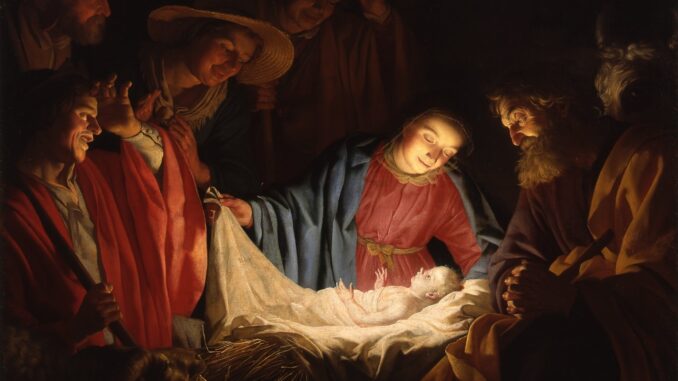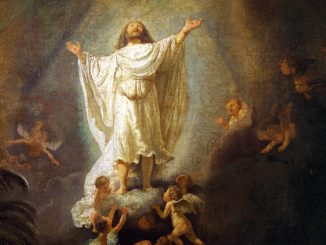
As the Advent season reaches its culmination in this fourth and final week, the final candle represents a theme of Love, heralding the imminent joy of Christmas. This season of anticipation and reflection is marked by more than the lighting of candles, but also through the resonant melodies of hymns that have echoed through centuries. These hymns are more than mere songs; they are the carriers of theology, history, and spiritual reflection.
“Hark! The Herald Angels Sing” stands out as the culmination of Advent’s message. The hymn has a rich melody and is steeped in theological tradition. Charles Wesley, a leader in the Methodist movement and a prolific hymn writer with over 6,000 hymns to his credit, penned the original words in 1739. Wesley’s goal was to impart sound doctrine through his hymns, particularly to those less educated. His brother, John Wesley, recognized the hymnal as a pivotal theological work, and Methodism was significantly shaped by song.
In his seminal work “Anglican Hymnology” published in 1885, Reverend James King undertook an extensive survey of hymnals used in 52 churches belonging to the global Anglican Communion. His research revealed a remarkable consistency: 51 of these hymnals shared four hymns, signifying their widespread acceptance and enduring popularity. These hymns, now known as the “Great Four Anglican Hymns,” were cherished not only in Anglican circles but also broadly in Protestant churches during the 19th century. The quartet includes the serene “All Praise to Thee, My God, This Night” by Thomas Ken, the advent anthem “Lo! He Comes With Clouds Descending” by Charles Wesley, the soul-stirring “Rock of Ages, Cleft for Me” by Augustus Montague Toplady, and the jubilant “Hark! The Herald Angels Sing,” also by Charles Wesley. These hymns have transcended their original contexts to become mainstays in Christian worship across denominations and centuries.
“Hark! The Herald Angels Sing” was originally titled “Hymn for Christmas-Day” and was inspired by the ringing of church bells and Wesley’s newfound faith. It debuted in 1739 with the opening line “Hark, how the welkin rings,” a phrase later transformed by George Whitefield, Wesley’s colleague, into the familiar “Hark! The Herald Angels Sing.” This alteration made the hymn more accessible, replacing the obscure term “welkin” with a clear reference to the angelic proclamation in the Gospel of Luke.
Whitefield’s adaptation was not the only change this hymn underwent. In 1840, a century after Wesley’s version, Felix Mendelssohn composed a cantata for the Gutenberg printing press anniversary. The music from this cantata was later adapted by William H. Cummings in 1855 to fit Wesley’s lyrics, creating the version we know and cherish today.
“Hark! The Herald Angels Sing” is a Gospel-saturated anthem, guiding listeners to the heart of the Christmas message. Its verses convey the miraculous birth of the Savior, the mystery of the Incarnation, and the profound implications of Christ’s coming. It beckons everyone to recognize and celebrate the arrival of the newborn King.
The hymn’s opening lines, “glory to the newborn King; peace on earth, and mercy mild, God and sinners reconciled,” paraphrase Luke 2:13-14, which describes the appearance of the heavenly host praising God following the birth of Jesus: “And suddenly there was with the angel a multitude of the heavenly host praising God, and saying, ‘Glory to God in the highest, and on earth peace, good will toward men.'”
“Veiled in flesh the Godhead see; Hail the incarnate Deity,” references John 1:14: “And the Word was made flesh, and dwelt among us, (and we beheld his glory, the glory as of the only begotten of the Father,) full of grace and truth.”
England banned the singing of Christmas carols along with other Christmas celebrations during the Puritan Parliament and the rule of Oliver Cromwell around 1647. Christmas hymns and carols were scarce during the late 17th and early 18th centuries, and “Hark! The Herald Angels Sing” was one of the few written during that period that has endured in popularity.
In modern times, this hymn is featured in classic films like “It’s a Wonderful Life” and “A Charlie Brown Christmas,” becoming familiar to Christians and non-Christians alike. Its theological accuracy, combined with the joyful melody of Mendelssohn’s composition, makes it a quintessential Advent hymn, inviting all to join the cosmic chorus in heralding the birth of Jesus.
As the final Advent candle is lit and preparations yield to Christmas celebrations, this carol, with its historic journey and theological depth, exhibits the spirit of love represented by the Fourth Sunday of Advent and the joyful arrival of Christ.



